Resources by Rob O'Lynn
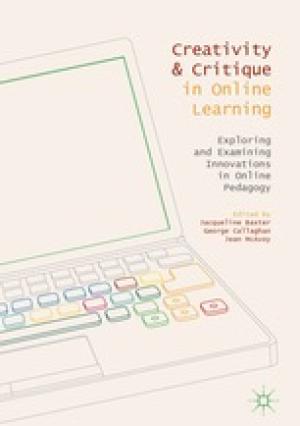
Online learning has come a long way in twenty years. Although distance education has been around in one form or another for a really long time, online education had fairly humble beginnings in California in the late 1990s. As noted in the foreword of Creativity and Critique in Online Learning, “At the end of the 1990s the internet was seen as an interesting application, but not necessarily relevant to all subjects or modes of teaching” (vii). The initial benefit of distance and online education was that it would connect learners together in a networked classroom that spanned further than four cinderblock walls. What initially started as a distance enterprise, where students would log in to a remote learning server and be funneled into a class with potentially dozens to hundreds of other faceless paying customers (and may or may not have received an actual education), the Learning Management System (LMS) has evolved into a “commonplace and essential piece of technology infrastructure in almost every university” (viii). Yet creativity does not come without critique, as is often the case when boundaries are stretched and broken. This volume provides a summary of the creative side of online learning as well as a critique of the overall process, at least within the purview of Open University’s experience as a leader in online learning, answering significant challenges and squashing anecdotal myths throughout. The editors and contributors, all of whom are either faculty at Open University or products of one of Open University’s online programs, seek to rewrite the narrative regarding online education. Rather than asking “Can online study really replicate the challenges and occasional joy of learning in a face to face environment?” (2), these contributors shift the focus to answering questions such as “How can [online learning] help teach the ‘hard to reach’ and how can it provide learning for those who have failed in (or rejected) learning in a face to face context?” (2). Putting aside such arguments as online education being more cost-effective in a bloated yet dwindling brick-and-mortar learning environment and what tools and techniques work the best in an online context, the contributors pull directly from their experience and ground their findings in action research that seeks to add a cogent and coherent voice to the ever-widening field of online learning studies. Creativity and Critique in Online Learning presents real-world problems with and in online learning with real-world solutions from real-world practitioners, some of which worked and some which did not. Of particular note in this volume are the chapters on developing effective forums (chapter 3), engaging students in informal learning communities (chapter 5), addressing concerns with academic dishonesty (chapter 7), and developing appropriate yet effective teacher-learner relationships (chapter 11). Overall, I found this volume helpful. As the director of a completely online graduate program in biblical studies and Christian leadership, I recognize the growing challenge of developing online learning experiences that are academically rigorous while also developing spaces for relational connection and personal growth. I was afraid this book would be another “do it our way” argument. However, the essays are more akin to the casual conversations we catch over coffee at a professional conference than the peer-reviewed “expert” keynote that we actually paid to hear.
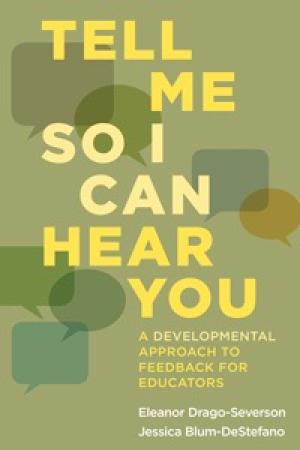
The question, “Can you give me some feedback on this,” is incredibly problematic. It is what some leadership theorists call a “landmine question.” Giving constructive feedback can be a tricky wicket. We may call feedback “honest.” However, it almost always comes across as critical, perhaps even mean. The idea is to focus on the negatives or how others can improve themselves, so we address it in what I call a “combatively collaborative” fashion. However, because of the possibly aggressive or even bullish nature of the one giving the feedback, it can have the reverse effect. Tell Me So I Can Hear You is a helpful volume for educators and leaders. Rooted in the cognitive-developmental theory of human development as espoused by Robert Kegan, the authors base their entire argument firmly in the “four ways of knowing – instrumental, socializing, self-authoring, and self-transforming” (40). The authors convincingly argue that feedback to colleagues and peers works best when it is understood to be part of the continuing education or professional development process. For them, this results in primarily offering feedback in a way connects with our learning styles. For example, if you are an instrumental learner, you will focus on offering feedback that adheres to the rules, regulations, and expectations of an employee of that organization. Since this approach relies heavily on rubrics, it will positively help colleagues understand where they stand professionally, based on the commonly-accepted careerist markers. However, it does not take into account more abstract qualities, such as emotional health, creativity, or one’s personal background. Those in administrative educational leadership often offer constructive or critical feedback and tend to process feedback differently than the faculty colleagues and students who are recipients of that feedback. The one receiving feedback may become confused, angry, or withdrawn because they interpret the administrator’s comments differently than the intended meaning. The benefits of this volume are in the consistent and thorough explanation of the “four ways of learning,” as the authors ground their entire discussion on showing how these ways of learning can work together through feedback settings to build a healthy and collaborative environment. To this end, the chapters on how we receive feedback (chapter 4), give feedback (chapter 5), and build a culture of trust in the organization (chapter 6) are certainly worth the price of the book. The reader should, however, be aware of two minor concerns: First, this volume accepts Common Core Standards as its operating model for understanding competency rather than seeking out a more integrated model of content comprehension and skills application. Second, the authors seem to interchange the concepts of “colleague” and “adult learner,” which causes some confusion as to whether this handbook is for the quad office or the adult-learning classroom. If you find yourself being required to offer more and more intense feedback or are in a leadership position, read Henry Cloud’s extremely practical volume Necessary Endings (New York: HarperBusiness, 2011) before diving into this volume.
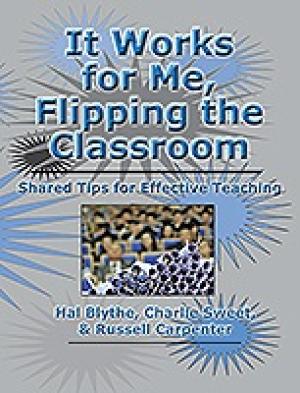
The pedagogical landscape of education has recently experienced a tectonic shift in terms of professional development. Once in the field, teachers seeking improvement and new ideas as to how to improve their craft, like so many professionals, used to wait for top-notch scholars to produce new research-based, paradigm-changing tomes. The thinking was that those in the trenches, those who filled kindergarten classrooms and chemistry labs across the country, were not creative enough to provide cutting-edge educational discoveries; only those who labored for a doctorate and took to the ivory towers of academia were capable of such exploration. Sadly, by the time these game-changing discoveries trickled down to the huddled masses in the faculty workroom, these ideas had already been discovered by accident and had been shared among the other faculty on the quad. Teacher’s in-service did not focus on the next great discovery but on how to share the discovery with fellow teachers. As this new wave of creative teachers began filling the gaps in higher education after proving themselves as master teachers and scholars in this area or that (and with the advent of social media), the focus kept evolving: for example, how can this idea, discovered in a chemistry classroom, be applied to the theology, composition, or social work classroom? Thankfully, Hal Blythe, Charlie Sweet, and Russell Carpenter, all writing professors at Eastern Kentucky University, have made it their mission to improve teacher effectiveness across the nation, first with their Noel Studio for Academic Creativity and now with their It Works for Me book series. In this volume, as in the previous seven volumes, Blythe, Sweet, and now Carpenter, have assembled a cadre of interdisciplinary scholars from across the country to engage in a conversation about what these teachers and administrators have found in their efforts to “flip” the classroom in an attempt to improve student learning and retention. The authors selected for this volume exhibited good ideas and were invited to share those ideas with others. Generosity, author and speaker Michael Hyatt would say, has become the new currency in learning, leadership, and life. This volume is divided into seven sections and includes an introduction and take-away-style conclusion. The sections this reviewer found of note were the opening where the flipped classroom is defined (all instructional content is found outside the classroom and classroom time is used for conversations, processing, and reflection), the sections on in-class and out-of-class assignments, and assessment. Each larger section opens with a short introduction from the editors, which is followed by a number of short essays from the contributing authors where each author or team of authors discusses their experiment with flipping the classroom. References, where applicable, have been provided. The concluding take-away section offers twenty ideas, such as never spending more than fifteen minutes on any activity, using Bloom’s taxonomy when crafting course components, engaging other faculty to get feedback on flipped assignments or course structure, and developing your own competency in technology. Overall, this is an incredibly helpful volume. Its strength is in sharing ideas that might inspire a new way of doing one assignment or offering one lecture that might increase student learning and retention. In that way, it works!
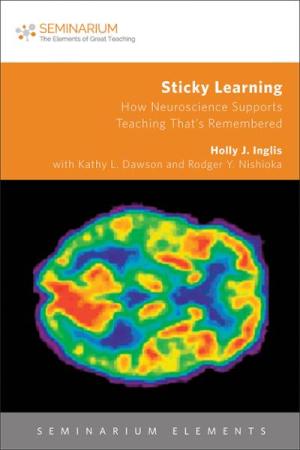
In many ways, Sticky Learning is all business. It has no traditional introductory or closing material and ends simply with a works cited list. This volume is divided into three major sections. The first section (composed of only chapter one) lays out the current landscape of education. In it, Inglis asks readers some basic pedagogical questions, such as what defines “effective learning” and how did we learn to teach. The second section (chapters two, three, and four) lay out a roadmap for where learning is headed. Inglis argues in chapter two that there is a differentiation between teaching and learning. Teaching occurs when an instructor simply imparts knowledge; learning occurs when the students interact with the instructor and actively apply what they have been taught. In chapter three, Inglis moves from learning theory to brain studies. As with each chapter in this book, her discussion is marked by brevity. She offers a concise, easy to understand introduction to brain science research condensed from larger, more detailed volumes such as Brain Rules by John Medina (2008) or Learning and Memory by Marilee Sprenger (1999), both of which are cited in the chapter. The majority of the research comes from the work of noted biologist James Zull and is operationalized through David Kolb’s model for experiential learning. In chapter four, Inglis discusses the five “pathways to memory” and three major reasons why we have trouble remembering information. Again, most of the material in these chapters is a concise summation of what the reader can find in the books by Medina and Sprenger noted above. In this reviewer’s opinion (one who has a limited working knowledge of the relationship between neuroscience and educational psychology), these two chapters alone are worth the price of the volume. After reading through these chapters, I was informed about the readily accepted correlation between neuroscience and educational psychology and also was empowered to integrate these theories into my own teaching. (I am already using Kolb’s theory, but now understand how to maximize it in my teaching.) The “Making It Stick” features that follow each content section provide reflective questions and practical applications which promote a “learn-do” environment for the reader to immediately assess the validity of Inglis’ arguments. The final section (chapters five through eight) provide a challenge to take what Inglis has argued in the previous half of the book and apply it directly to classroom contexts. While chapters five and seven – both authored by Inglis – were helpful, I found that chapters six and eight cancelled each other out. Chapter six, by Nishioka, provides a response from one who has used these concepts in his classroom, as demonstrated by the real-life examples. Chapter eight, authored by Dawson, offers a case study of how one can apply the arguments and concepts set forth in the book. In my opinion, either one should have been chosen over the other, or Nishioka’s reflections should have been included in the larger treatment rather than as a stand-alone chapter. This is, however, my only real complaint with this volume. I especially appreciated the websites and QR codes to unlock additional content that are scattered throughout the book. Overall, this is an important book for educators at any level to read and wrestle with as they continue to seek the best ways to educate their students.
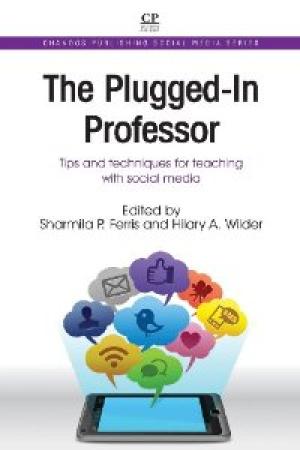
This volume is designed more like a handbook than a piece of prose. Aside from the preface that details how the volume is arranged and how each successive chapter is outlined, each chapter (twenty-five in total) represents a stand-alone essay that describes how an instructor can integrate a piece of social media into her or his curriculum and assignment portfolio. The essays are divided into four parts. The essays in Part 1, “Research, Writing and Information Fluency,” focus on applications of social media that challenge students to develop effective research and writing skills. The essays on “sharing” sites are of note because they offer instructors insight on how to use social media sites that students are already using to share research through bookmarking cultural artifacts. Part 2, “Communication and Collaboration,” is divided into two sections. The first section focuses on instructional communication through social media. Each social media outlet examined in this section is a communicative tool (for example, Wimba or YouTube) that can be re-allocated for educational purposes. The second section of Part 2 concerns issues of collaboration in terms of students working together on educational projects through social media tools such as Google Docs, study blogs, and group-designed wikis. Part 3, “Critical Thinking and Creativity,” is also divided into two sections. The first section considers how students can demonstrate critical (and, I might add, culturally perceptive) thinking through social media outlets such as Tumblr and Facebook. Students are challenged in these sections to examine social trends and personal expressions offered by users of these social media outlets to ascertain how persons learn and demonstrate social ethics or personal and professional development. The second section focuses on creative final course projects such as digital storytelling or video streaming presentations. Part 4, which concludes the volume, focuses on integrative learning, on integrating research, communication, collaboration, critical thinking, and creativity into one social media project. The final essay is of note here because it describes how students conducted a “social media campaign” through Twitter (xxvii). The students researched a client, communicated with opinion leaders in the client’s field, and promoted the client’s cause through critical reflection and creative engagement. The Plugged-In Professor clearly articulates that learning can be promoted in a host of ways through the use of social media. Therefore this is a valuable resource. The social media savvy instructor will be able to wade through the technical language with ease and find projects that he or she can use in class. However, the digital immigrant or digital alien may be overwhelmed at first. This volume can be read straight through, but one is likely to get bogged down in the various approaches and creative projects. It may be more helpful to read this volume like a tasting menu, sampling this Twitter-based exercise or that exercise for Google Docs. Perhaps it could be seen in a similar light as the Teaching Theology & Religion “Teaching Tactics.” Regardless of how one reads the material, the instructor should be careful to assess each project’s usefulness before implementing a social media project. The only real limitation to this volume is that the field of religious studies and theology was not represented, but religion and theology faculty can adapt these projects for their courses. For example, I was challenged by some of the essays in Part 1 to develop a wiki group project for my Pentateuch course. That said, it would be have useful and encouraging to see at least one sample of how social media has been used in a religious studies or theology course.
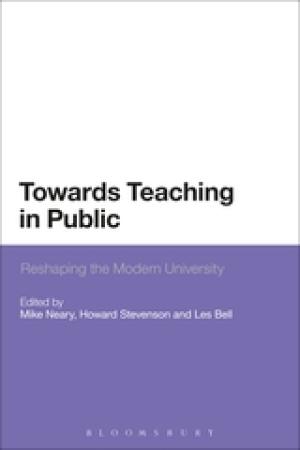
The enterprise known as collegiate education is at a crossroads. This statement should not be a surprise to those involved in higher education. The playing field has changed drastically over the last decade since the advent of online learning. Debates continue to rage in the academic community regarding issues related to accreditation, how courses are delivered, faculty credentials, and the cost of a degree program. These questions confront present-day educators and administrators located in U.S. higher educational institutions. These debates are keenly felt in the U.K. and in other global contexts, although each context will address them from different perspectives depending on teaching and learning needs. Towards Teaching in Public is primarily focused on addressing these questions head on. As the book details, there is a seismic shift occurring in the educational institutions of the U.K., and it is likely that these shifts will be felt here in the U.S. sometime in the not-too-distant future. That said, understanding how these shifts are impacting British schools before they impact American institutions could aid administrators and faculty in how to plan for the forthcoming changes. The place to begin, then, is in understanding what is meant by “public.” In the U.K., “public” and “private” have less to do with religious affiliation and more to do with where tuition dollars come from in higher educational contexts. In the British system, education in “private” institutions is provided at the expense of the student. “Public” institutions, then, primarily receive money from the government to provide education to students. These students can be degree-seekers, lifelong learners, tradesmen who are looking to pick up some new information, or individuals interested in taking a class now and then. The question the book raises is whether this remains an effective endeavor in a perpetually struggling economy. A secondary question concerns higher educational institutions as the loci of learning – teacher, student, and community. In answering these two fundamental questions, the contributors to this volume contend that the university could serve as the central hub of political, societal, and cultural reform. The volume is divided into three major sections. The first section (chapters 1-3) focuses on education as “a public good.” The essays in this section recount the modern history of education in the U.K., noting how the public university was established to provide free education to all and how that morphed into the private universities that sought to offer degrees to paying students who would be held to more rigorous academic standards. The second section (chapters 4-6) focuses on the relationship between teacher and student. This section argues for a higher value to be placed on students. The chapter entitled “The Student as Scholar” was particular insightful as it mapped out a program for developing undergraduate researchers who could benefit the university in a number of ways. The final section (chapters 7-10) seeks to answer the questions raised previously. First, the university should continue to offer free education to the general public through workshops, public lectures, and continuing education offerings. However, the book advocates for requiring stricter regulations for degree-seeking students. Second, the locus of learning has moved to the community, although the concept is more Marxist in nature. This would be my only critique of the material in the volume. In the end, the authors seem to say that the purpose of education is simply to share our collected knowledge. The modern university, then, will be a place where the discussion of ideas will occur but little else. Although this volume was an insightful read, it would most benefit those involved with administration or international policy discussions rather than faculty.
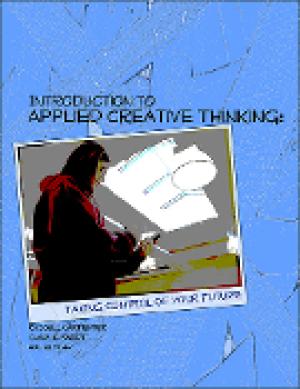
Creativity and pedagogical competency are paradigmatic phrases in the ever-changing arena of academics. With the advent of online learning and degree-completion programs, traditional academic institutions have found themselves scrambling to meet the educational needs of diverse populations. For in-seat programs, the most fundamental yet also foundational change has occurred in how faculty view themselves in the classroom. A host of questions arise as faculty wrestle with their own teaching identity. Are we lecturers? Are we project facilitators? Do we allow the students to guide the curriculum? How do we promote academic competency while also honoring cultural diversity? As the designers of the Applied Creative Thinking program and Noel Studio at Eastern Kentucky University, the authors of this volume see their work not as the evolution of a new theory, such as social learning theory or distributed cognition, as much as the genesis of “an emerging creative literacy” (viii). They firmly believe that we have the ability to be creative established within us, and that we “get better applying creativity the more practice [we] have doing it” (xi). Therefore, this book is built on an argument that “creativity is a set of learnable skills” (xi). Designed as the student manual for a course in creative thinking, this volume can be divided into three major sections: theory, strategies, and implementation. The first section consists of the first five chapters. In it the authors define four major perspectives of creativity − process, person, press, and product − and introduce the concept of recursiveness. This opening section provides the foundation for the subsequent chapters in which the authors address additional issues related to creative thinking, such as whether creativity can be taught and some common myths regarding creativity. The next major section (chapters 6 to 14) describes various strategies for developing creativity (such as piggybacking, collaborating, and using metaphors). The final section (chapters 15 to 21) discusses how to develop a creative environment, including chapters on developing a creative strategy and creative uses of media and technology. The volume is composed more like a workbook than a textbook, and each chapter includes a concept list, creative exercises, and a bibliography for further reading. One might expect this volume to be written for faculty interested in becoming more creative in their teaching discipline or who are interested in integrating creative thinking strategies into their curriculum or course design. It took reading only the first lines to realize that this volume is, in fact, oriented toward students who are either involved in a course focusing on creative writing or contemporary leadership strategies (or are simply interested in becoming more creatively competent). Once I recognized that the volume was student rather than professor focused, I found it to be quite helpful for reflecting on how creativity is a process that must be engineered by the student, and how to implement the strategic parameters of creative thinking as a professor. As an instructor interested in developing my creative competency, I was elated to discover that the authors, along with Shawn Apostel, published a companion volume for instructors in February 2013, titled Teaching Applied Creative Thinking: A New Pedagogy for the 21st Century.